The tossing and turning in bed, the anxiety of waiting to fall asleep, the constant clock ticking; most of us have experienced this sometimes. But insomnia is a sad reality that many live with every other night. Insomnia is the inability to fall asleep and continue to be in a deep sleep quickly, which leads to poor sleep quality and affects your health and lifestyle. Due to a lack of good quality adequate sleep, insomniacs tend to feel drowsy during day time.
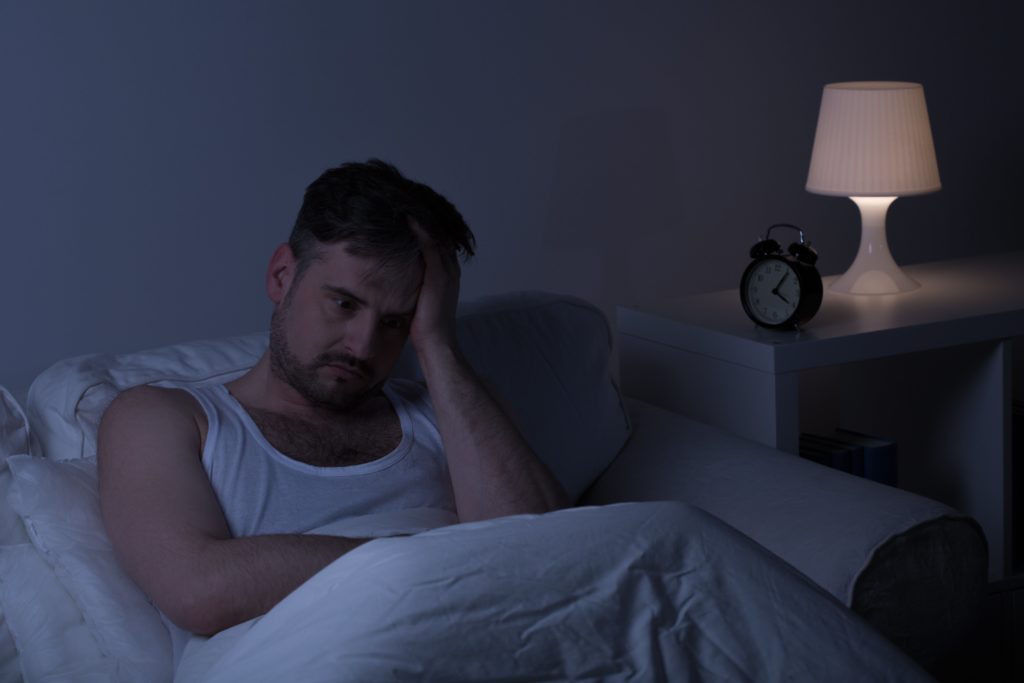
Insomnia incapacitates people to varying degrees and can hamper your mental, physical, and spiritual health. Due to the gradual onset of symptoms, insomnia is often diagnosed late, posing a challenge in its treatment. However, medical treatment and therapy sessions can completely cure insomnia. If you or anybody you know battles the demons of insomnia, you can also practice Yoga. Yoga is a holistic way of healing yourself from within and perfectly complements the medical treatment required to cure insomnia.
How Does Yoga Cure Insomnia?
Yoga is a discipline of life that enhances your health and brings harmony among various functions of your mind, body, and spirit. Yoga effectively treats insomnia due to its ability to coordinate your mental, physical, and spiritual well-being. Insomnia is not an illness that affects just one aspect of your health. It is a disturbing disorder that gradually and progressively affects your overall well-being. Let us see how Yoga reverts the ill effects of insomnia and restores your normal sleep cycle.

- Meditation is an integral part of Yoga and is pivotal in healing sleep disturbances with its calming effect on your mind, body, and soul.
- Yoga asanas enhance blood circulation of the brain, which is crucial to regulating your sleeping cycle.
- Pranayama and meditation successfully eliminate several harmful effects of stress, anxiety, depression, and other psychological disturbances contributing to insomnia.
- Yoga balances disturbed levels of hormones that control your sleep cycle, which may revert the effects of insomnia.
- Yoga soothes fatigued nerve cells and makes it easier to fall asleep and enjoy good quality sleep.
- Yoga postures adequately exercise and stretch your muscles, which makes you long for physical rest. The need to rejuvenate your tired body acts on your disturbed sleep pattern and slowly heals your insomnia.
- Yoga asanas improve postural problems that may prevent you from getting good sleep.
A scientific study has proven the efficacy of Yoga in improving symptoms of insomnia. CLICK here to check more details on the survey.
Let us know which Yoga techniques are the most effective for treating insomnia.
3 Yoga Postures For Insomnia
Asanas or physical postures form a crucial part of Yoga therapy. Yoga postures stimulate almost every cell in your body to gear towards superior functioning. Yoga postures act on a macro and micro level to retain healthy physiology and anatomy.
Here are three easy yet effective Yoga postures you should try if falling asleep quickly is a challenge for you.
1. Viparita Karani
Vipirita Karani is a recumbent Yoga posture where you put your legs up the wall and relax your body. Like Savasana, Viparita Karani is a relaxing Yoga posture that rejuvenates your physical energy and soothes your mind.
Steps For Viparita Karani
- Lie down with a blanket or a Yoga mat close to the wall.
- Align your body so that your hips touch the wall and gradually elevate your legs up the wall. Some people use a cushion or blanket to support their hips and buttocks while performing Viparita Karani.
- Both your legs should be touching each other, and the back of your legs should be touching the wall.
- Shift your body till you are in a comfortable position.
- You may place a folded towel beneath your neck or back to enhance your body posture. Allow your arms to rest at the side, or fold them and place your interlocked palms beneath your neck.
- Focus on a balanced breathing cycle and remain in Viparita Karani for 5-10 minutes.
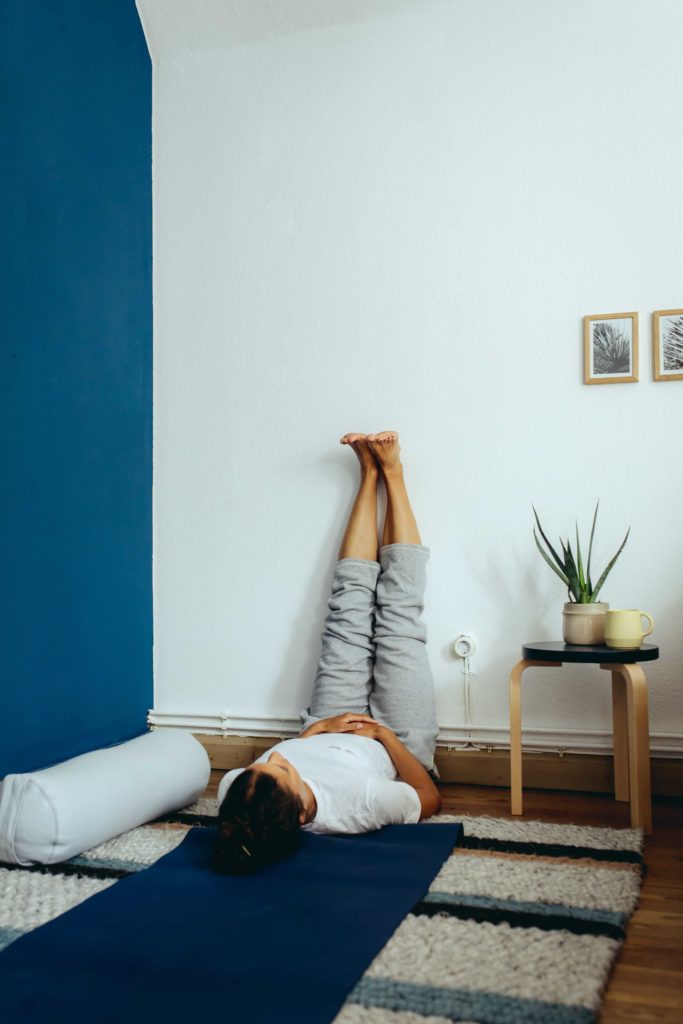
Viparita Karani reduces elevated blood pressure, manages anxiety, and relaxes your legs. People who have insomnia due to restless leg syndrome can benefit by practicing Viparita Karani.
2. Setu Bandhasana
Setu Bandhasana is another recumbent Yoga posture that soothes your tired mind and improves your sleep cycle. The asana positively affects your digestion and, in turn, your sleep cycle.
Steps For Setu Bandhasana
- Lie down comfortably, keep your arms at the side of your trunk, and straighten out your legs with some distance between them.
- Bend your knees and press your feet against the floor to elevate your legs, back, and trunk off the floor.
- Your head, neck, shoulders, arms, and feet should touch the floor.
- Keep your arms straight with your palms pressed against the floor for additional support. Alternatively, you may clasp your ankles or interlock your fingers and stretch your arms beneath your body to balance your body weight adequately.
- Elevate your trunk and core until you feel a good stretch to your hamstrings, lower back, and abdominal muscles.
- Continue regular breathing throughout Setu Bandhasana, and relax your body after being in the asana for 5-10 breathing cycles.
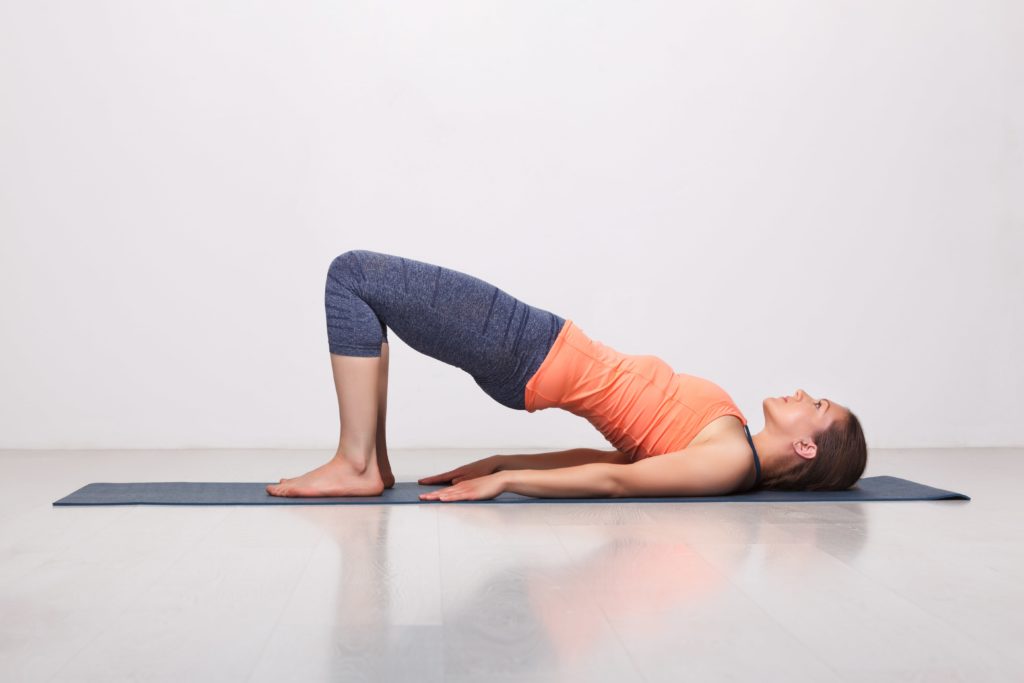
Setu Bandhasana contributes towards healing insomnia by calming down your mind and relieving stress and anxiety. Patients battling insomnia due to depression benefit immensely from Setu Bandhasana.
3. Ananda Balasana
Ananda Balasana is a variation of the child’s pose, or Balasana, and has excellent potential to reduce the ill effects of insomnia. Ananda means happiness, and Bala is a Sanskrit language word for a child or a baby. Ananda Balasana is rightfully known as the happy baby pose because you lie down like a child or baby who is blissfully playing, engrossed in their world.
Steps for Balasana
- Lie down in a relaxed manner and take deep breaths.
- Keep some distance between your legs and bend your knees. Simultaneously, elevate your hips to bring your knees closer to your chest.
- Bend your ankles so that the soles of your feet point toward the ceiling.
- Keep your neck adequately flexed so that it remains in a neutral position.
- Curl your index and middle fingers around your big toes and pull slightly. Alternatively, you may grip your ankles for better support.
- The previous step will allow you to experience a good stretch along your hamstrings and bring your knees closer to your chest.
- Take 5-10 deep breaths, and then relax your body.
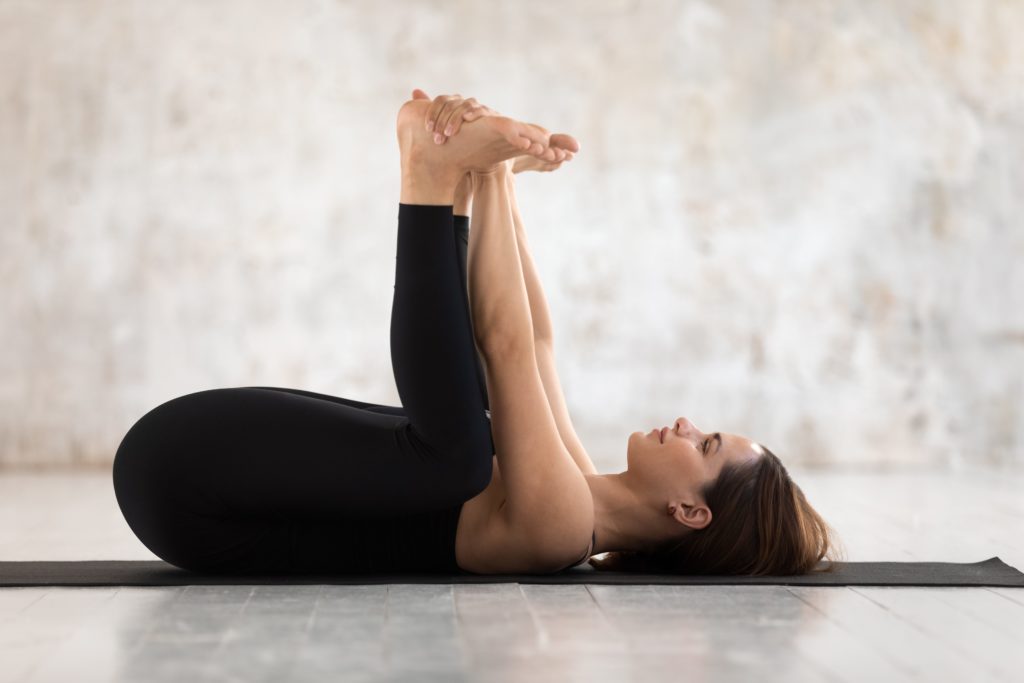
Ananda Balasana is highly effective in relaxing tight muscles and wound-up nerves, which is crucial to enjoying a good night’s sleep. The happy baby pose relaxes your mind and effectively improves your sleep cycle.
Physical asanas are a small part of the vast ocean of Yogic knowledge. Several other Yoga techniques effectively improve your health. Let us discuss some Yoga techniques that will reset your disturbed sleep cycle and curb the progress of insomnia.
Meditation Techniques For Insomnia
Meditation is one of the best ways to calm and relax your mind. People often wrongly correlate meditation with religious prayers, but the truth could not be further from this. While people pray to appease a particular religious deity, meditation is a Yogic practice that profoundly affects your health and well-being.
Here is a simple meditation routine that you can practice in under 10 minutes to eliminate insomnia symptoms.
- Begin your meditation routine by sitting cross-legged on the floor of a comfortable and cozy corner of your house.
- Ensure that there are no external disturbances like loud noise or flashy lights around you as you meditate.
- Close your eyes and place both your palms on the knees or your thighs to begin meditating.
- Choose an imaginary point within your mind and divert all your focus to that point. You may recite a chant, a religious incantation, or a prayer while focusing on an arbitrary point. (READ why chanting is an excellent therapy for your mental health) You may meditate by reciting any incantation or chants, irrespective of your religious faith.
- Alternatively, you may recall a goal you nurture and repeat mentally or out loud while meditating. This is a great way to meditate and reinforce your ambition to achieve your dreams and goals.
- Mental focus is paramount while meditating. Do not allow your mind to deviate to lesser important thoughts while meditating. Getting your mind back on track is crucial if you lose focus.
- If chanting or focusing on any important task does not appeal to you, you may
Meditation will come naturally with regular practice, and you will learn to focus your mind without any force. Meditation teaches you the technique of letting go of negative thoughts, unnecessary emotions, and mental stress. Regular meditation will guide you to peek within and get acquainted with your true self, which is crucial for your spiritual well-being. The positive effects of meditation ease your mind and spirit, allowing you to relax and fall asleep quickly.
Please VISIT our blog page to read more about the positive effects of meditation.
Insomnia And Mudras
Yoga Mudras are facial or hand gestures that subtly and positively impact your health and well-being. There are over 400 mudras that find application in your routine Yoga practice. Yoga principles dictate that a subtle life force, prana, resides within every living body. The mudras facilitate the free flow of the quiet life force through your mind, body, and spirit.
You may practice mudras independently or combine them with Yoga postures to improve insomnia symptoms. The Gyan mudra and Prana mudra are exceptionally effective in healing a disturbed sleep cycle.
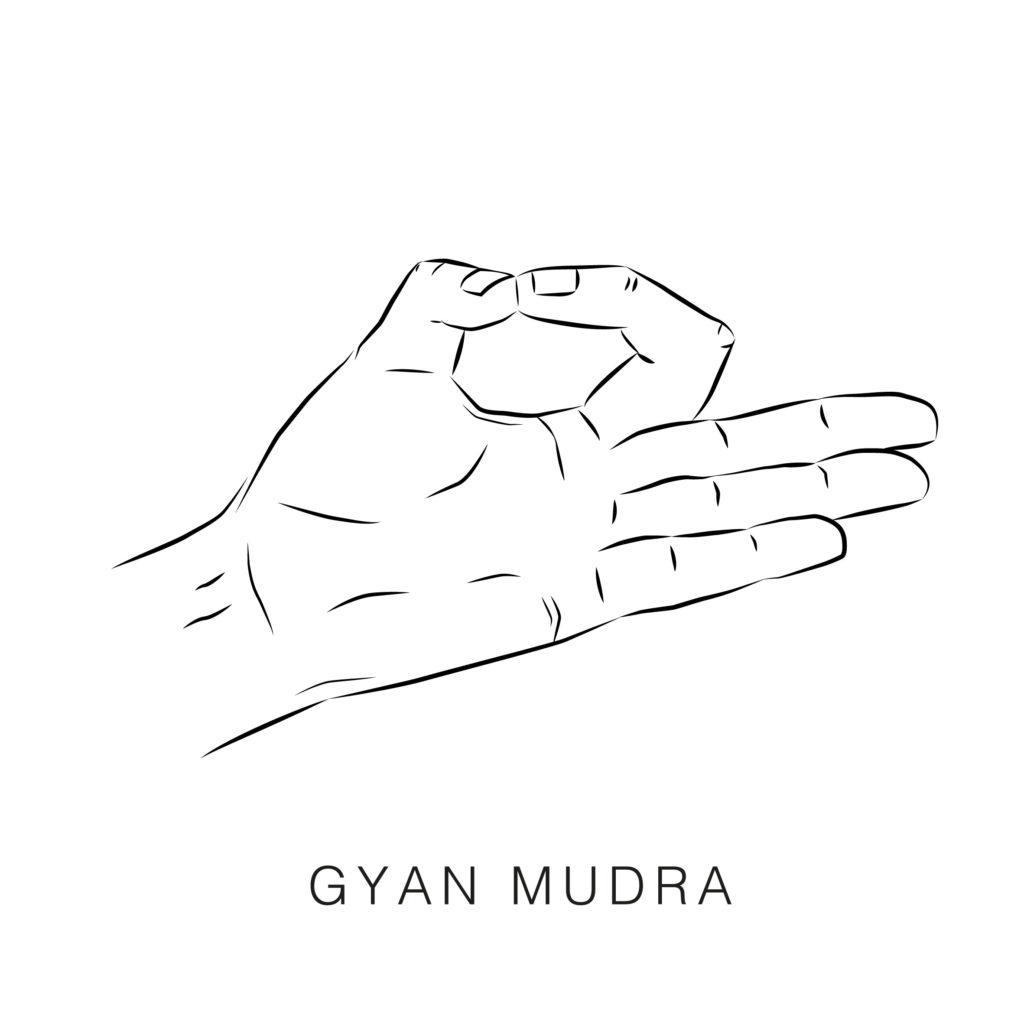
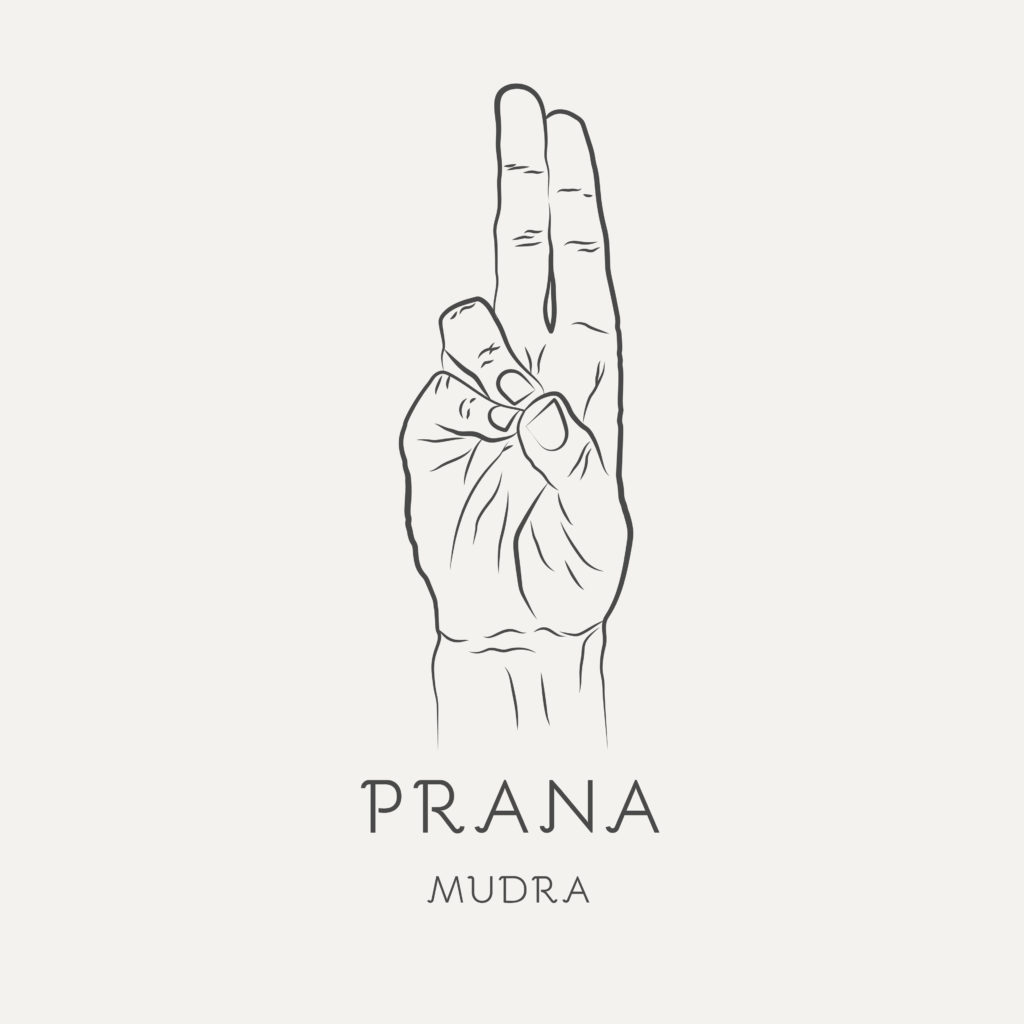
Please READ our blog on Mudras to learn more about mudras’ techniques.
Pranayama For Insomnia
Every devoted student of Yoga is aware of Pranayama and its immense health benefits. Pranayama is a Yogic breathing exercise involving breathing techniques to enhance physical, spiritual, and mental health.
Various Pranayama techniques like Anulom Vilom, Bhastrika, and Kapalabhati modify your well-being in several ways that allow you to lead a healthier lifestyle. Symptoms of insomnia respond very well to breathing exercises. Patients who have battled insomnia for a long time may feel physically, mentally, and spiritually rejuvenated with the regular practice of Pranayama.
Please READ our blogs to learn the other benefits of Pranayama.
Insomnia is a silent enemy that affects your holistic well-being and may hamper your ability to perform your day-to-day tasks. However, insomnia is entirely reversible with medication, therapy, and complementary techniques like Yoga. Patients with insomnia should remember that Yoga cannot replace mainstream medical treatment you may be undergoing.
Yoga is a beneficial allied therapy that will heal your sleep disorder and steer your lifestyle in a better direction.







